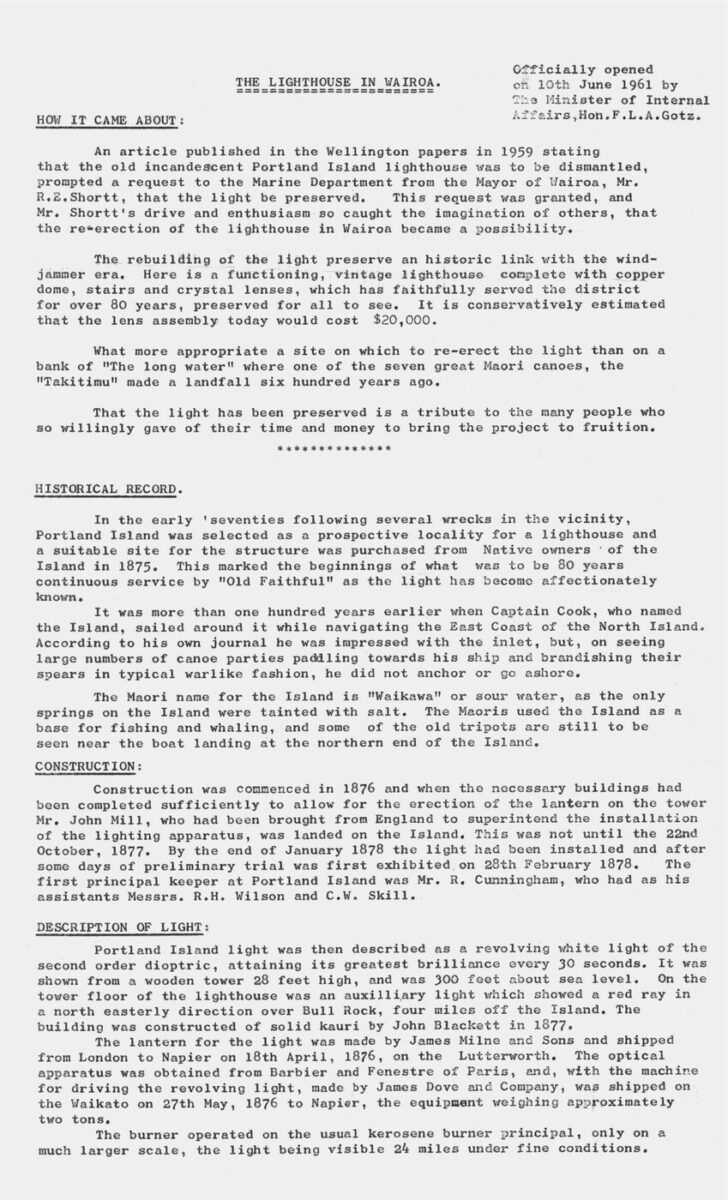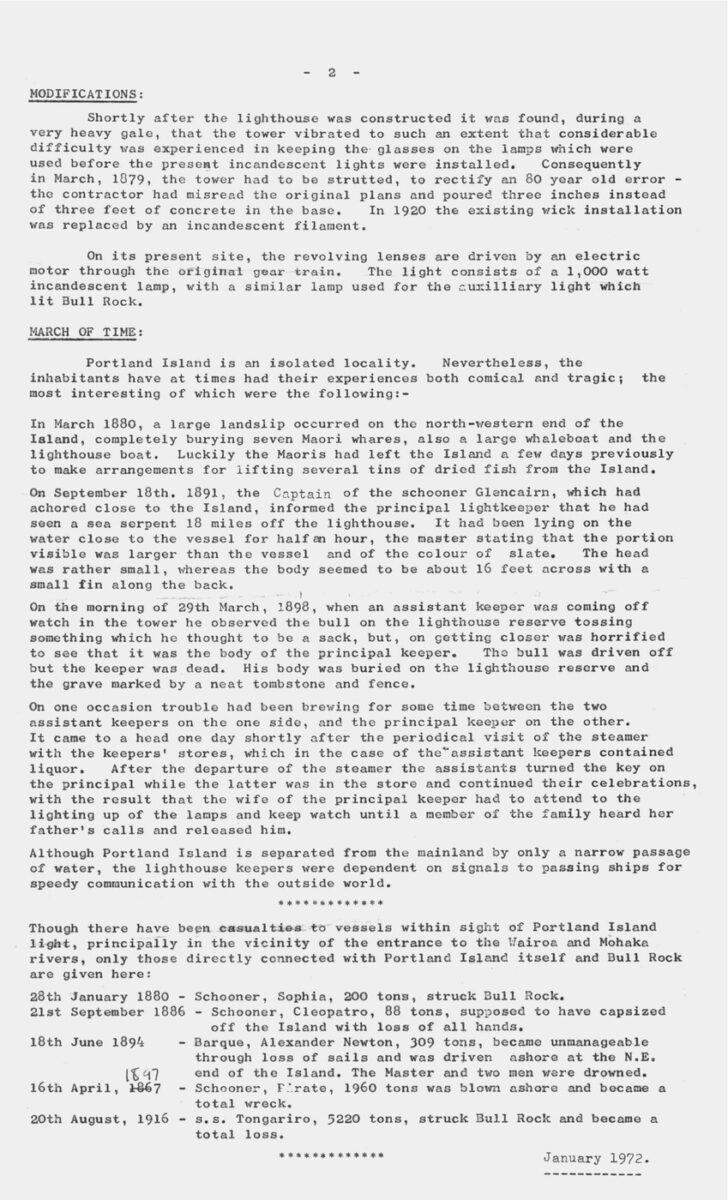– 2 –
MODIFICATIONS:
Shortly after the lighthouse was constructed it was found, during a very heavy gale, that the tower vibrated to such an extent that considerable difficulty was experienced in keeping the glasses on the lamps which were used before the present incandescent lights were installed. Consequently in March, 1879, the tower had to be strutted, to rectify an 80 year old error – the contractor had misread the original plans and poured three inches instead of three feet of concrete in the base. In 1920 the existing wick installation was replaced by an incandescent filament.
On its present site, the revolving lenses are driven by an electric motor through the original gear train. The light consists of a 1,000 watt incandescent lamp, with a similar lamp used for the auxiliary light which lit Bull Rock.
MARCH OF TIME:
Portland Island is an isolated locality. Nevertheless, the inhabitants have at times had their experiences both comical and tragic; the most interesting of which were the following:-
In March 1880, a large landslip occurred on the north-western end of the Island, completely burying seven Maori whares, also a large whaleboat and the lighthouse boat. Luckily the Maoris had left the Island a few days previously to make arrangements for lifting several tins of dried fish from the Island.
On September 18th, 1891, the Captain of the schooner Glencairn, which had anchored close to the Island, informed the principal lightkeeper that he had seen a sea serpent 18 miles off the lighthouse. It had been lying on the water close to the vessel for half an hour, the master stating that the portion visible was larger than the vessel and of the colour of slate. The head was rather small, whereas the body seemed to be about 16 feet across with a small fin along the back.
On the morning of 29th March, 1898, when an assistant keeper was coming off watch in the tower he observed the bull on the lighthouse reserve tossing something which he thought to be a sack, but, on getting closer was horrified to see that it was the body of the principal keeper. The bull was driven off but the keeper was dead. His body was buried on the lighthouse reserve and the grave marked by a neat tombstone and fence.
On one occasion trouble had been brewing for some time between the two assistant keepers on the one side, and the principal keeper on the other. It came to a head one day shortly after the periodical visit of the steamer with the keepers’ stores, which in the case of the assistant keepers contained liquor. After the departure of the steamer the assistants turned the key on the principal while the latter was in the store and continued their celebrations, with the result that the wife of the principal keeper had to attend to the lighting up of the lamps and keep watch until a member of the family heard her father’s calls and released him.
Although Portland Island is separated from the mainland by only a narrow passage of water, the lighthouse keepers were dependent on signals to passing ships for speedy communication with the outside world.
Though there have been casualties to vessels within sight of Portland Island light, principally in the vicinity of the entrance to the Wairoa and Mohaka rivers only those directly connected with Portland Island itself and Bull Rock are given here:
28th January 1880 – Schooner, Sophia, 200 tons, struck Bull Rock.
21st September 1886 – Schooner, Cleopatro, 88 tons, supposed to have capsized off the Island with loss of all hands.
18th June 1894 – Barque Alexander Newton, 309 tons, became unmanageable through loss of sails and was driven ashore at the N.E. end of the Island. The Master and two men were drowned.
16th April, 1897 – Schooner, Pirate, 1960 tons was blown ashore and became a total wreck.
20th August, 1916 – s.s. Tongariro, 5220 tons, struck Bull Rock and became a total loss.
January 1972













Do you know something about this record?
Please note we cannot verify the accuracy of any information posted by the community.